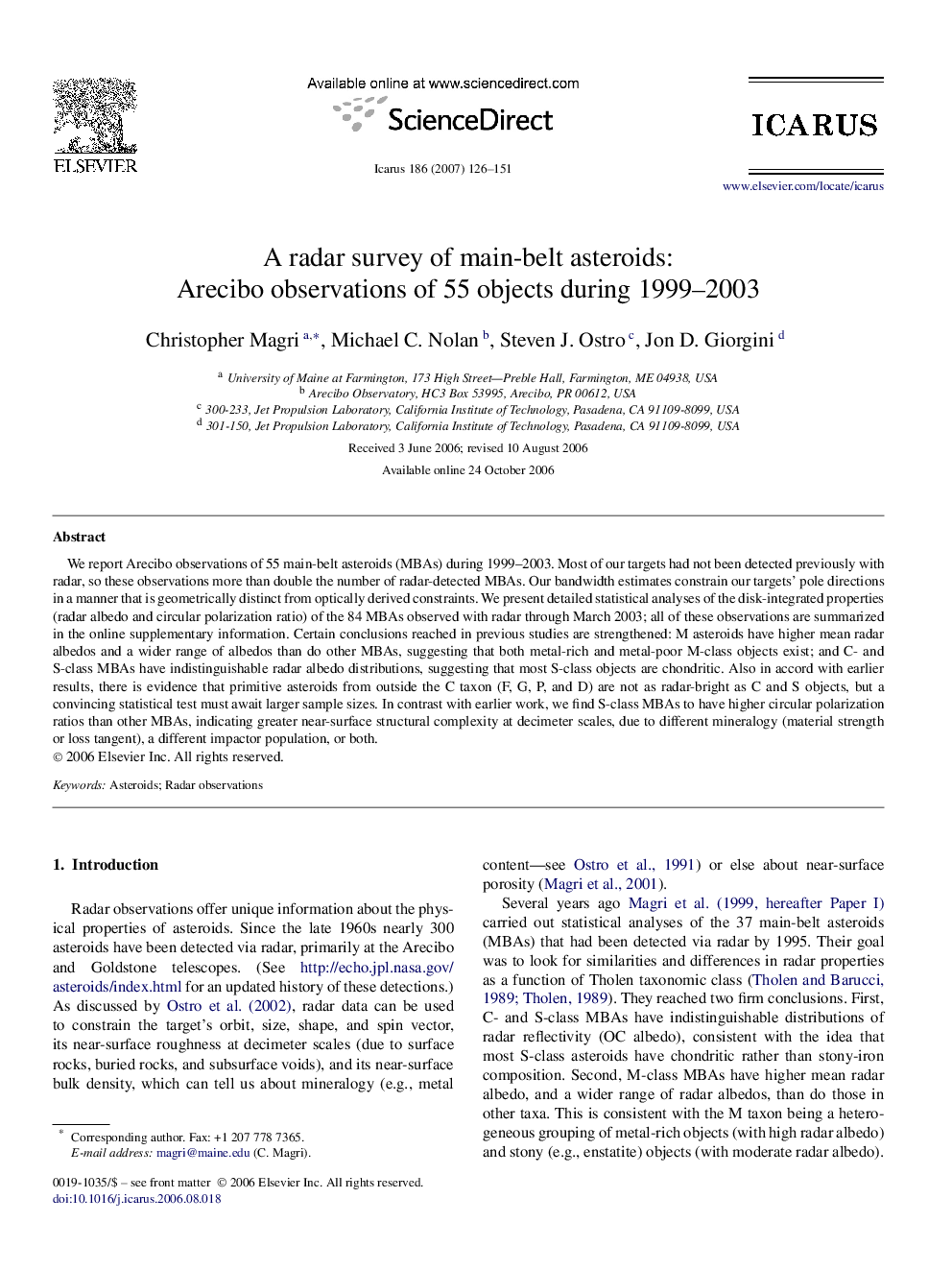| Article ID | Journal | Published Year | Pages | File Type |
|---|---|---|---|---|
| 1775772 | Icarus | 2007 | 26 Pages |
We report Arecibo observations of 55 main-belt asteroids (MBAs) during 1999–2003. Most of our targets had not been detected previously with radar, so these observations more than double the number of radar-detected MBAs. Our bandwidth estimates constrain our targets' pole directions in a manner that is geometrically distinct from optically derived constraints. We present detailed statistical analyses of the disk-integrated properties (radar albedo and circular polarization ratio) of the 84 MBAs observed with radar through March 2003; all of these observations are summarized in the online supplementary information. Certain conclusions reached in previous studies are strengthened: M asteroids have higher mean radar albedos and a wider range of albedos than do other MBAs, suggesting that both metal-rich and metal-poor M-class objects exist; and C- and S-class MBAs have indistinguishable radar albedo distributions, suggesting that most S-class objects are chondritic. Also in accord with earlier results, there is evidence that primitive asteroids from outside the C taxon (F, G, P, and D) are not as radar-bright as C and S objects, but a convincing statistical test must await larger sample sizes. In contrast with earlier work, we find S-class MBAs to have higher circular polarization ratios than other MBAs, indicating greater near-surface structural complexity at decimeter scales, due to different mineralogy (material strength or loss tangent), a different impactor population, or both.
